Earn points when you:
Red Tea Cups
- 6 Chinese Tea
Product Filters
Filter by Category
Filter by Pu-erh Type
Filter by Type
Filter by Taste
Filter by Origin
Filter by Caffeine Level
Filter by Leaf Form
Filter by Brand
Filter by Colour
Filter by Material
Filter by Number of Pieces
Filter by Colour
Filter by Material
Filter by Size
Filter by Material
Filter by Size
Filter by Colour
Filter by Material
Filter by Size
Filter by Colour
Filter by Material
Filter by Origin
6 Products

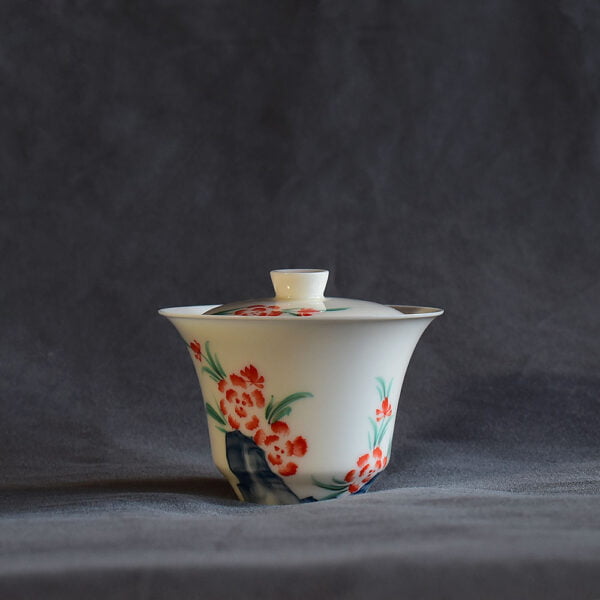

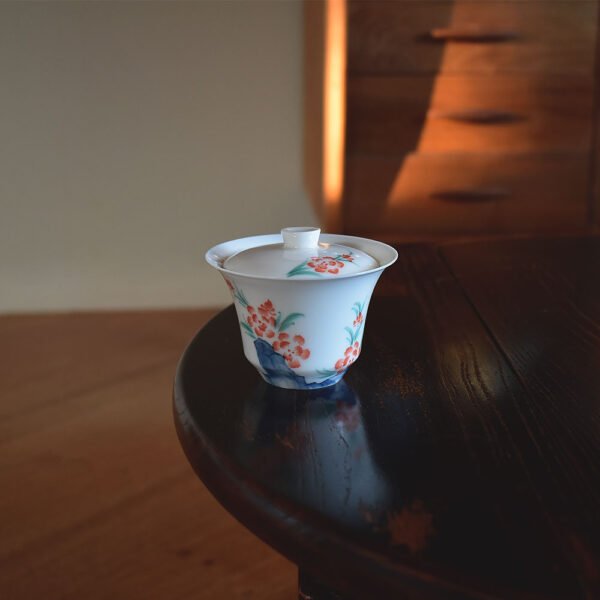 $48.99
$48.99This thin hand-painted Gaiwan is as transparent as jade, adorned with a traditional Chinese pattern – the peony, which represents happiness and contentment. The design of the lipped mouth extends the curvature of the lid, making it less likely to scald one’s hand during use.
The glossy glazed surface of this Gaiwan and its fine and delicate texture exudes a peaceful and gentle sensation. The hand-painted colourful pattern is vivid and lifelike, making it the perfect companion for daily tea drinking.

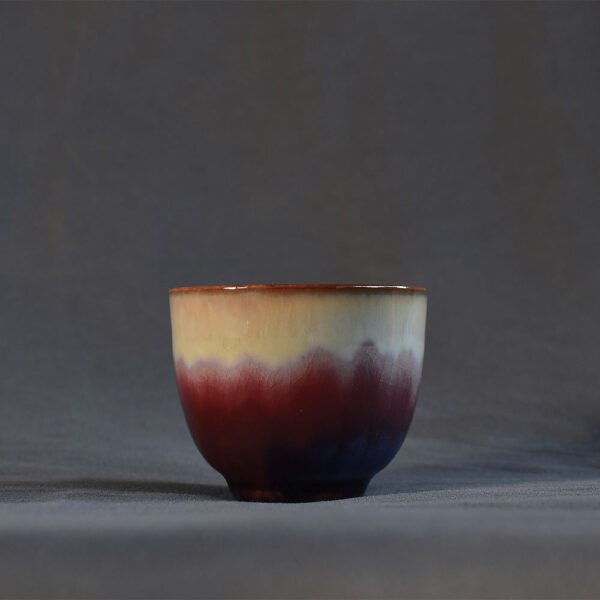

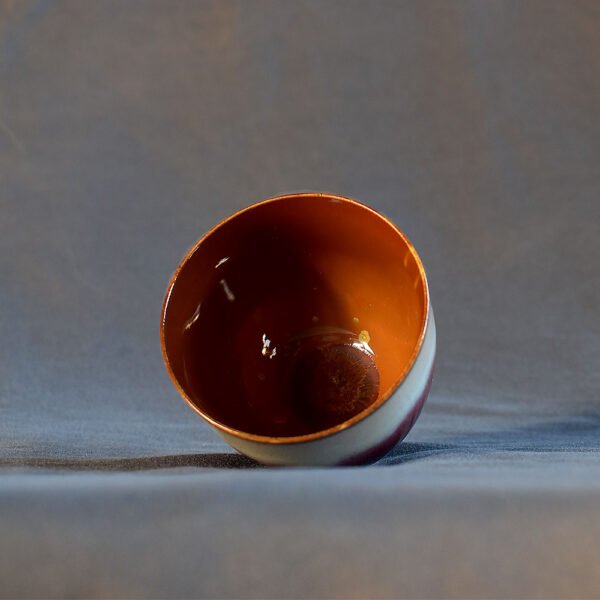 $33.99
$33.99This red teacup is baked with firewood and is made of both kiln-fired glaze variations and cracked glaze craft. Because kiln alteration techniques enable an exciting and dynamic way to create different red colour glazes on this teacup, each teacup is unique and made by hand, with no two being exactly alike. The phenomenon of crystal formation is caused by kiln altered in a cup, commonly known as “crystal flowers”.
Besides that, the unique cracked glaze technique used creates beautiful patterns on the cup’s surface. Over time as it is soaked with tea soup, and then resulting variations in the pattern make each piece truly outstanding and add more enjoyment to the tea drinking experience.
Attention:
- Kiln-fired glaze variations are often unpredictable and can result in a wide range of colours from a single firing.
- The porosity of ceramics varies depending on the materials used, the recipe, the pressure applied, the duration of pressure, the thickness of the body, the firing temperature, and the duration of firing. Generally, the finer the porcelain, the smaller the pores, while the coarser the pottery, the larger the pores.
- Since porcelain is made from clay, the amount of iron spots present in the clay varies depending on the mineral content of the soil. These iron spots are harmless and do not affect the use of the porcelain. Removing them would require the use of chemical materials, which can be damaging to high-quality porcelain.
- Handmade products are not perfect, and each piece can have differences in size, shape, colour, and other aspects.

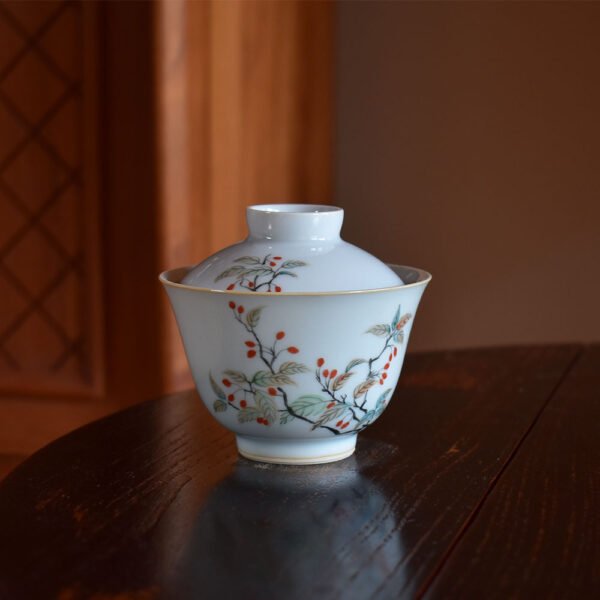

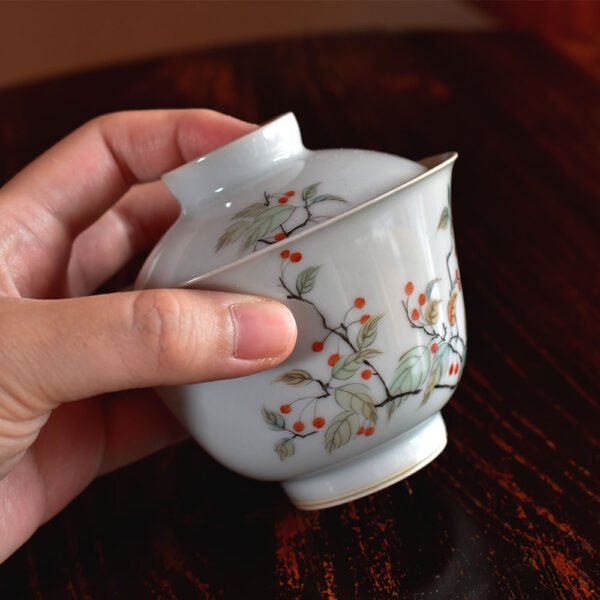 $109.99
$109.99This Gaiwan is made with antique clay glaze, which gives it a smooth and lustrous surface, as well as a thick and sturdy body, evoking a sense of ancient elegance, tranquillity, and warmth. The hand-painted pictures are lively and natural, depicting the goji berries with lifelike accuracy.
Goji berries, a small orange-red fruit with a long history in China, symbolize auspiciousness and happiness. The elongated fruits of goji berries are fiery red in color, hence in China, goji berries are regarded as a symbol of celebration and joy. The fiery red goji berries represent good luck and signify a life filled with prosperity and vitality.
Furthermore, the Gaiwan is crafted using the overglaze colour painting craft, which produces pure, vibrant, and full colours. Since Gaiwan is hand-painted by an artist, every piece is unique and machine-printed decals cannot compare with.

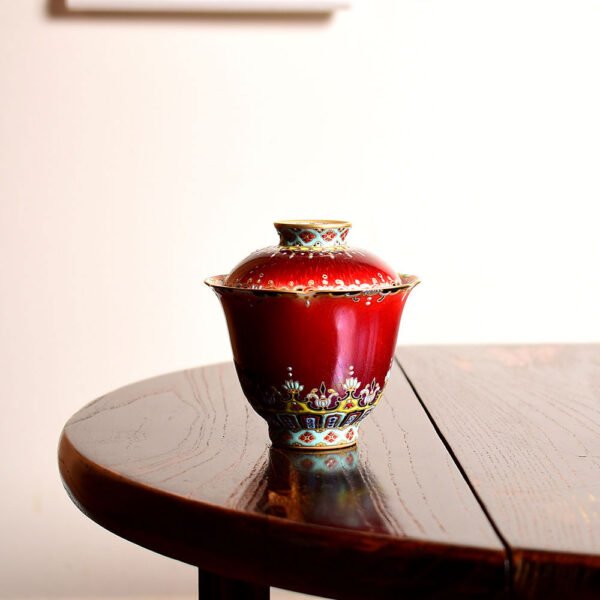

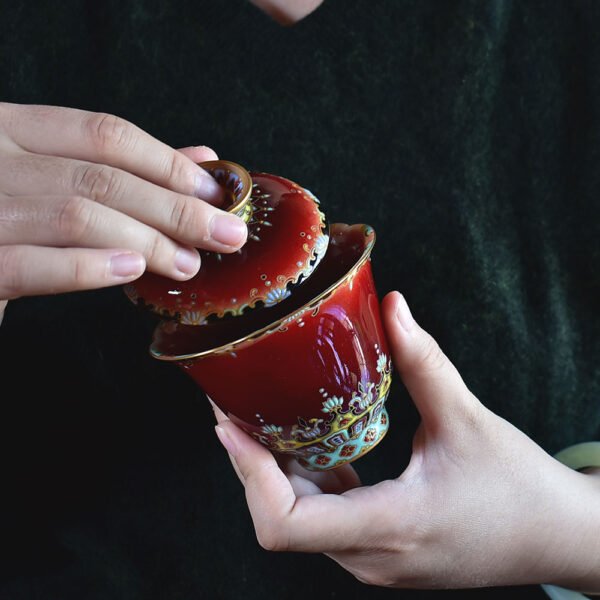 $849.99[vc_row et_row_padding="true" el_class="p-variations"][vc_column width="1/3" offset="vc_col-xs-4"][et_image alignment="aligncenter" image="30470" img_link="url:/p/hand-painted-lang-hong-enamel-dunhuang-gaiwan-san-cai/"][/et_image][/vc_column][vc_column width="1/3" offset="vc_col-xs-4"][et_image alignment="aligncenter" image="30531" extra_class="p-current"][/et_image][/vc_column][vc_column width="1/3" offset="vc_col-xs-4"][/vc_column][/vc_row]
$849.99[vc_row et_row_padding="true" el_class="p-variations"][vc_column width="1/3" offset="vc_col-xs-4"][et_image alignment="aligncenter" image="30470" img_link="url:/p/hand-painted-lang-hong-enamel-dunhuang-gaiwan-san-cai/"][/et_image][/vc_column][vc_column width="1/3" offset="vc_col-xs-4"][et_image alignment="aligncenter" image="30531" extra_class="p-current"][/et_image][/vc_column][vc_column width="1/3" offset="vc_col-xs-4"][/vc_column][/vc_row]This Ercai Gaiwan is handcrafted using the technique of gold painting, Lang Hong colouring and enamel glazed paint. The pattern on its painting is Dunhuang-style, with vibrant and luxurious colours, exuding a sense of luxury and elegance.
Gold painting, one of the decorative techniques, involves applying gold powder (gold dust) or bright gold (gold solution) on the porcelain surface to create intricate patterns or to complement other decorations such as borders or a golden background. Afterwards, the Gaiwan is fired at a low temperature to achieve the final finish. The lid, rim, and base of this Ercai Gaiwan are all embellished with intricate gold outlining craftsmanship.
The patterns on this Gaiwan depict Dunhuang-style designs, layered and intricate, displaying a rich array of colours. Among them, the lotus pattern is the most used decorative motif in Dunhuang art. From the Northern Liang to the Yuan Dynasty, lotus flowers can be found in every cave of the Mogao Grottoes. In Buddhism, the lotus symbolizes purity and enlightenment. It is believed that one’s soul can attain rebirth through the lotus, leading to the blissful Western Pure Land. Within the Mogao Grottoes, lotus flowers adorn the background, embellishing figures of bodhisattvas and celestial beings, embodying the sacred and immaculate nature of Buddhas and bodhisattvas. Hence, the lotus is the quintessential flower representing Buddhism. Apart from the lotus, another significant motif is the honeysuckle, also known as Jin Hua (golden-silver flower). It is an important decorative symbol in Dunhuang art, introduced alongside Buddhist art in China as a decorative floral theme. The rise of honeysuckle patterns in China occurred nearly simultaneously with the spread of Buddhism. Its extensive use in Buddhist decorations during the Northern Dynasties influenced secular ornamentation at that time. Honeysuckle blooms during summer, transitioning from white to yellow after budding, shedding old leaves in late autumn, and promptly producing new leaves. It endures even in the harshest winter conditions, quietly thriving in the wild with minimal requirements of water and soil. As a result, the honeysuckle pattern found abundant application in Buddhist-related decorations, drawing from its persistent growth characteristics. Furthermore, the motif of the “Baoxiang Flower,” also known as Baoxianhua or Baolianhua, is another traditional auspicious pattern in Dunhuang decorations. It is one of the auspicious Three Treasures and was prevalent during China’s Sui and Tang Dynasties. The concept of “Baoxiang” originates from Buddhism, where it refers to a respectful term for Buddhist images. The Baoxiang Flower represents an idealized form of purity, grace, and beauty.
In addition to these captivating decorative patterns, the craftsmanship of Lang Hong ceramics is also deserving of praise. Firstly, the full name of Lang Hong is “Langyao Red,” also known as “Gem Red” or “Ox Blood Red.” It is one of the most vibrant colours in traditional Chinese precious copper red glazes. Lang Hong glaze is achieved by using copper as a colouring agent and firing it at a high temperature of 1300°C. Since copper elements easily evaporate at high temperatures, the range of colour expression is limited. The firing process demands strict control over the atmosphere and temperature, and the outcome is greatly affected by external factors, making it a highly challenging process to successfully produce Lang Hong ceramics. Lang Hong glaze boasts a smooth and translucent surface, resembling glass, with crackled patterns resembling cow hair texture. The glaze exhibits a deep and vivid colour, resembling freshly congealed ox blood with its brilliant crimson hue, symbolizing auspiciousness, and wealth. Revered as a “treasure among a thousand kilns,” the red-glazed porcelain of Lang Hong showcases a distinctive ethnic style, shining like a dazzling gem in the history of world ceramics. The colour red, known for its auspiciousness and affluence, has elevated Lang Hong ceramics to a radiant and remarkable masterpiece in the realm of ceramic art.
Enamel, on the other hand, is a decorative technique that involves transplanting the cloisonné enamel method onto a porcelain body as an overglaze colour decoration. Enamel decoration on porcelain, known as “Fàlángcǎi” in Chinese, entails painting colourful patterns on the porcelain surface and then firing it at high temperatures to fuse the colours with the porcelain, achieving a durable and splendid design. These patterns often feature exquisite themes such as flowers, birds, figures, and landscapes, reflecting the essence of traditional Chinese culture and art. The process of creating enamel decorations is extremely intricate and complex, requiring skilled and experienced craftsmen. First, the porcelain prototype is made, and then special mineral pigments are used to paint patterns on its surface. Once the painting is completed, a series of firing processes follow, during which the temperature and timing for both the porcelain and the enamel colours are crucial factors. Improper temperature or timing can result in cracks in the porcelain or unstable colours. Enamel decoration is considered a treasure in traditional Chinese craftsmanship, representing the wisdom and skills of ancient Chinese artisans.
This Gaiwan showcases exquisite Lang Hong craftsmanship, with intricate and delicate Dunhuang patterns that carry profound symbolism.

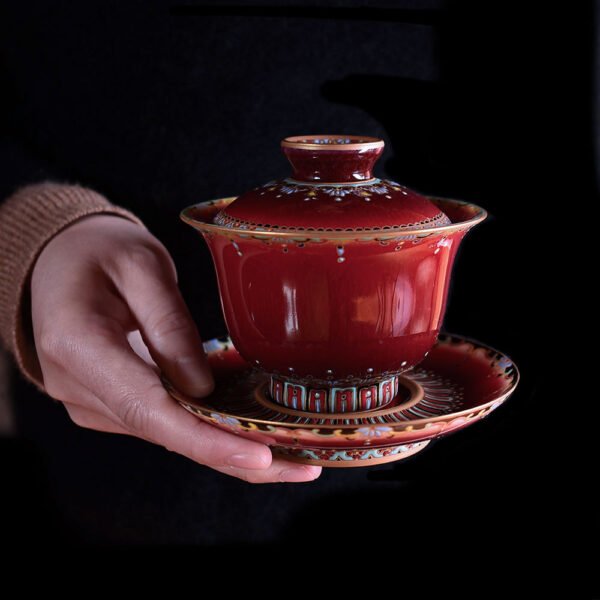

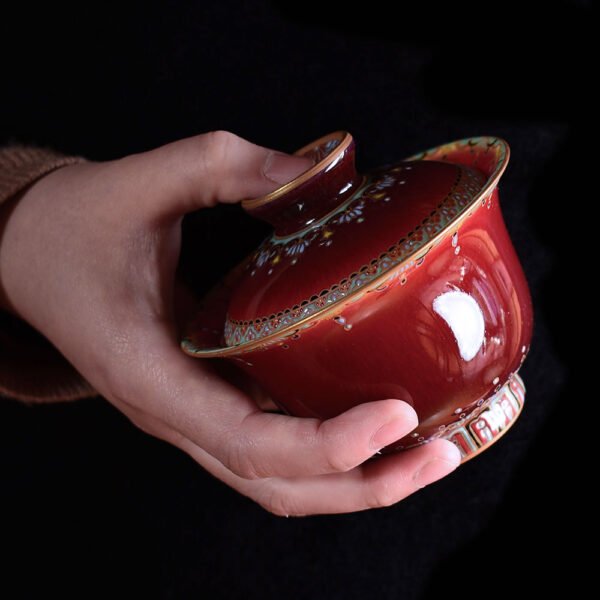 $999.99[vc_row et_row_padding="true" el_class="p-variations"][vc_column width="1/3" offset="vc_col-xs-4"][et_image alignment="aligncenter" image="30470" extra_class="p-current"][/et_image][/vc_column][vc_column width="1/3" offset="vc_col-xs-4"][et_image alignment="aligncenter" image="30531" img_link="url:/p/hand-painted-lang-hong-enamel-dunhuang-gaiwan-er-cai/"][/et_image][/vc_column][vc_column width="1/3" offset="vc_col-xs-4"][/vc_column][/vc_row]
$999.99[vc_row et_row_padding="true" el_class="p-variations"][vc_column width="1/3" offset="vc_col-xs-4"][et_image alignment="aligncenter" image="30470" extra_class="p-current"][/et_image][/vc_column][vc_column width="1/3" offset="vc_col-xs-4"][et_image alignment="aligncenter" image="30531" img_link="url:/p/hand-painted-lang-hong-enamel-dunhuang-gaiwan-er-cai/"][/et_image][/vc_column][vc_column width="1/3" offset="vc_col-xs-4"][/vc_column][/vc_row]This Sancai Gaiwan is handcrafted using the technique of gold painting, Lang Hong colouring and enamel glazed paint. The pattern on its painting is Dunhuang-style, with vibrant and luxurious colours, exuding a sense of luxury and elegance.
Gold painting, one of the decorative techniques, involves applying gold powder (gold dust) or bright gold (gold solution) on the porcelain surface to create intricate patterns or to complement other decorations as borders or a golden background. Afterwards, the Gaiwan is fired at a low temperature to achieve the final finish. The gold painting craftsmanship is applied in multiple areas of this Sancai Gaiwan.
The patterns on this Gaiwan depict Dunhuang-style designs, layered and intricate, displaying a rich array of colours. Among them, the lotus pattern is the most used decorative motif in Dunhuang art. From the Northern Liang to the Yuan Dynasty, lotus flowers can be found in every cave of the Mogao Grottoes. In Buddhism, the lotus symbolizes purity and enlightenment. It is believed that one’s soul can attain rebirth through the lotus, leading to the blissful Western Pure Land. Within the Mogao Grottoes, lotus flowers adorn the background, embellishing figures of bodhisattvas and celestial beings, embodying the sacred and immaculate nature of Buddhas and bodhisattvas. Hence, the lotus is the quintessential flower representing Buddhism. Apart from the lotus, another significant motif is the honeysuckle, also known as Jin Hua (golden-silver flower). It is an important decorative symbol in Dunhuang art, introduced alongside Buddhist art in China as a decorative floral theme. The rise of honeysuckle patterns in China occurred nearly simultaneously with the spread of Buddhism. Its extensive use in Buddhist decorations during the Northern Dynasties influenced secular ornamentation at that time. Honeysuckle blooms during summer, transitioning from white to yellow after budding, shedding old leaves in late autumn, and promptly producing new leaves. It endures even in the harshest winter conditions, quietly thriving in the wild with minimal requirements of water and soil. As a result, the honeysuckle pattern found abundant application in Buddhist-related decorations, drawing from its persistent growth characteristics. Furthermore, the motif of the “Baoxiang Flower,” also known as Baoxianhua or Baolianhua, is another traditional auspicious pattern in Dunhuang decorations. It is one of the auspicious Three Treasures and was prevalent during China’s Sui and Tang Dynasties. The concept of “Baoxiang” originates from Buddhism, where it refers to a respectful term for Buddhist images. The Baoxiang Flower represents an idealized form of purity, grace, and beauty.
In addition to these captivating decorative patterns, the craftsmanship of Lang Hong ceramics is also deserving of praise. Firstly, the full name of Lang Hong is “Langyao Red,” also known as “Gem Red” or “Ox Blood Red.” It is one of the most vibrant colours in traditional Chinese precious copper red glazes. Lang Hong glaze is achieved by using copper as a colouring agent and firing it at a high temperature of 1300°C. Since copper elements easily evaporate at high temperatures, the range of colour expression is limited. The firing process demands strict control over the atmosphere and temperature, and the outcome is greatly affected by external factors, making it a highly challenging process to successfully produce Lang Hong ceramics. Lang Hong glaze boasts a smooth and translucent surface, resembling glass, with crackled patterns resembling cow hair texture. The glaze exhibits a deep and vivid colour, resembling freshly congealed ox blood with its brilliant crimson hue, symbolizing auspiciousness, and wealth. Revered as a “treasure among a thousand kilns,” the red-glazed porcelain of Lang Hong showcases a distinctive ethnic style, shining like a dazzling gem in the history of world ceramics. The colour red, known for its auspiciousness and affluence, has elevated Lang Hong ceramics to a radiant and remarkable masterpiece in the realm of ceramic art.
Enamel, on the other hand, is a decorative technique that involves transplanting the cloisonné enamel method onto a porcelain body as an overglaze colour decoration. Enamel decoration on porcelain, known as “Fàlángcǎi” in Chinese, entails painting colourful patterns on the porcelain surface and then firing it at high temperatures to fuse the colours with the porcelain, achieving a durable and splendid design. These patterns often feature exquisite themes such as flowers, birds, figures, and landscapes, reflecting the essence of traditional Chinese culture and art. The process of creating enamel decorations is extremely intricate and complex, requiring skilled and experienced craftsmen. First, the porcelain prototype is made, and then special mineral pigments are used to paint patterns on its surface. Once the painting is completed, a series of firing processes follow, during which the temperature and timing for both the porcelain and the enamel colours are crucial factors. Improper temperature or timing can result in cracks in the porcelain or unstable colours. Enamel decoration is considered a treasure in traditional Chinese craftsmanship, representing the wisdom and skills of ancient Chinese artisans.
This Sancai Gaiwan showcases exquisite Lang Hong craftsmanship, with intricate and delicate Dunhuang patterns that carry profound symbolism.

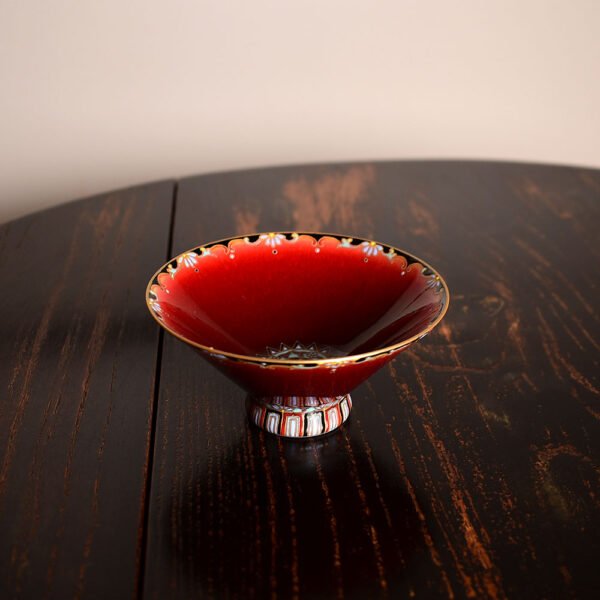

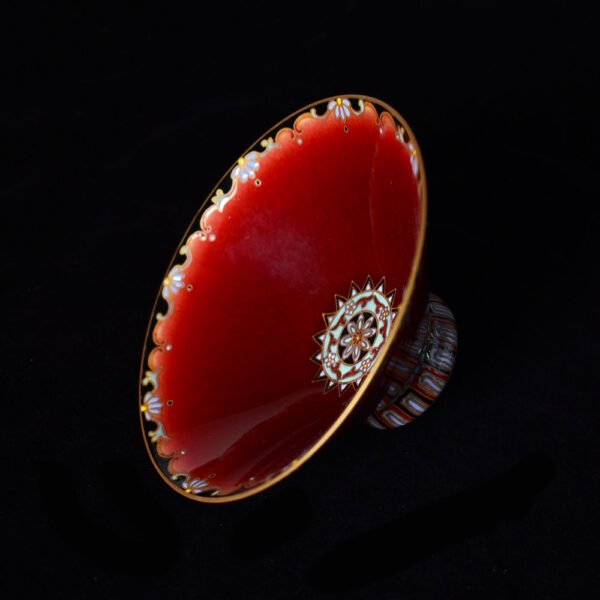 $489.99
$489.99This hat cup is handcrafted using the technique of gold painting, Lang Hong colouring and enamel glazed paint. The pattern on its painting is Dunhuang-style, with vibrant and luxurious colours, exuding a sense of luxury and elegance.
Gold painting, one of the decorative techniques, involves applying gold powder (gold dust) or bright gold (gold solution) on the porcelain surface to create intricate patterns or to complement other decorations as borders or a golden background. Afterwards, the cup is fired at a low temperature to achieve the final finish. The rim of this teacup’s mouth employs the gold painting technique.
The patterns on this cup depict Dunhuang-style designs, layered and intricate, displaying a rich array of colours. Among them, the lotus pattern is the most used decorative motif in Dunhuang art. From the Northern Liang to the Yuan Dynasty, lotus flowers can be found in every cave of the Mogao Grottoes. In Buddhism, the lotus symbolizes purity and enlightenment. It is believed that one’s soul can attain rebirth through the lotus, leading to the blissful Western Pure Land. Within the Mogao Grottoes, lotus flowers adorn the background, embellishing figures of bodhisattvas and celestial beings, embodying the sacred and immaculate nature of Buddhas and bodhisattvas. Hence, the lotus is the quintessential flower representing Buddhism. Apart from the lotus, another significant motif is the honeysuckle, also known as Jin Hua (golden-silver flower). It is an important decorative symbol in Dunhuang art, introduced alongside Buddhist art in China as a decorative floral theme. The rise of honeysuckle patterns in China occurred nearly simultaneously with the spread of Buddhism. Its extensive use in Buddhist decorations during the Northern Dynasties influenced secular ornamentation at that time. Honeysuckle blooms during summer, transitioning from white to yellow after budding, shedding old leaves in late autumn, and promptly producing new leaves. It endures even in the harshest winter conditions, quietly thriving in the wild with minimal requirements of water and soil. As a result, the honeysuckle pattern found abundant application in Buddhist-related decorations, drawing from its persistent growth characteristics. Furthermore, the motif of the “Baoxiang Flower,” also known as Baoxianhua or Baolianhua, is another traditional auspicious pattern in Dunhuang decorations. It is one of the auspicious Three Treasures and was prevalent during China’s Sui and Tang Dynasties. The concept of “Baoxiang” originates from Buddhism, where it refers to a respectful term for Buddhist images. The Baoxiang Flower represents an idealized form of purity, grace, and beauty.
In addition to these captivating decorative patterns, the craftsmanship of Lang Hong ceramics is also deserving of praise. Firstly, the full name of Lang Hong is “Langyao Red,” also known as “Gem Red” or “Ox Blood Red.” It is one of the most vibrant colours in traditional Chinese precious copper red glazes. Lang Hong glaze is achieved by using copper as a colouring agent and firing it at a high temperature of 1300°C. Since copper elements easily evaporate at high temperatures, the range of colour expression is limited. The firing process demands strict control over the atmosphere and temperature, and the outcome is greatly affected by external factors, making it a highly challenging process to successfully produce Lang Hong ceramics. Lang Hong glaze boasts a smooth and translucent surface, resembling glass, with crackled patterns resembling cow hair texture. The glaze exhibits a deep and vivid colour, resembling freshly congealed ox blood with its brilliant crimson hue, symbolizing auspiciousness, and wealth. Revered as a “treasure among a thousand kilns,” the red-glazed porcelain of Lang Hong showcases a distinctive ethnic style, shining like a dazzling gem in the history of world ceramics. The colour red, known for its auspiciousness and affluence, has elevated Lang Hong ceramics to a radiant and remarkable masterpiece in the realm of ceramic art.
Enamel, on the other hand, is a decorative technique that involves transplanting the cloisonné enamel method onto a porcelain body as an overglaze colour decoration. Enamel decoration on porcelain, known as “Fàlángcǎi” in Chinese, entails painting colourful patterns on the porcelain surface and then firing it at high temperatures to fuse the colours with the porcelain, achieving a durable and splendid design. These patterns often feature exquisite themes such as flowers, birds, figures, and landscapes, reflecting the essence of traditional Chinese culture and art. The process of creating enamel decorations is extremely intricate and complex, requiring skilled and experienced craftsmen. First, the porcelain prototype is made, and then special mineral pigments are used to paint patterns on its surface. Once the painting is completed, a series of firing processes follow, during which the temperature and timing for both the porcelain and the enamel colours are crucial factors. Improper temperature or timing can result in cracks in the porcelain or unstable colours. Enamel decoration is considered a treasure in traditional Chinese craftsmanship, representing the wisdom and skills of ancient Chinese artisans.
This hat cup showcases exquisite Lang Hong craftsmanship, with intricate and delicate Dunhuang patterns that carry profound symbolism.




